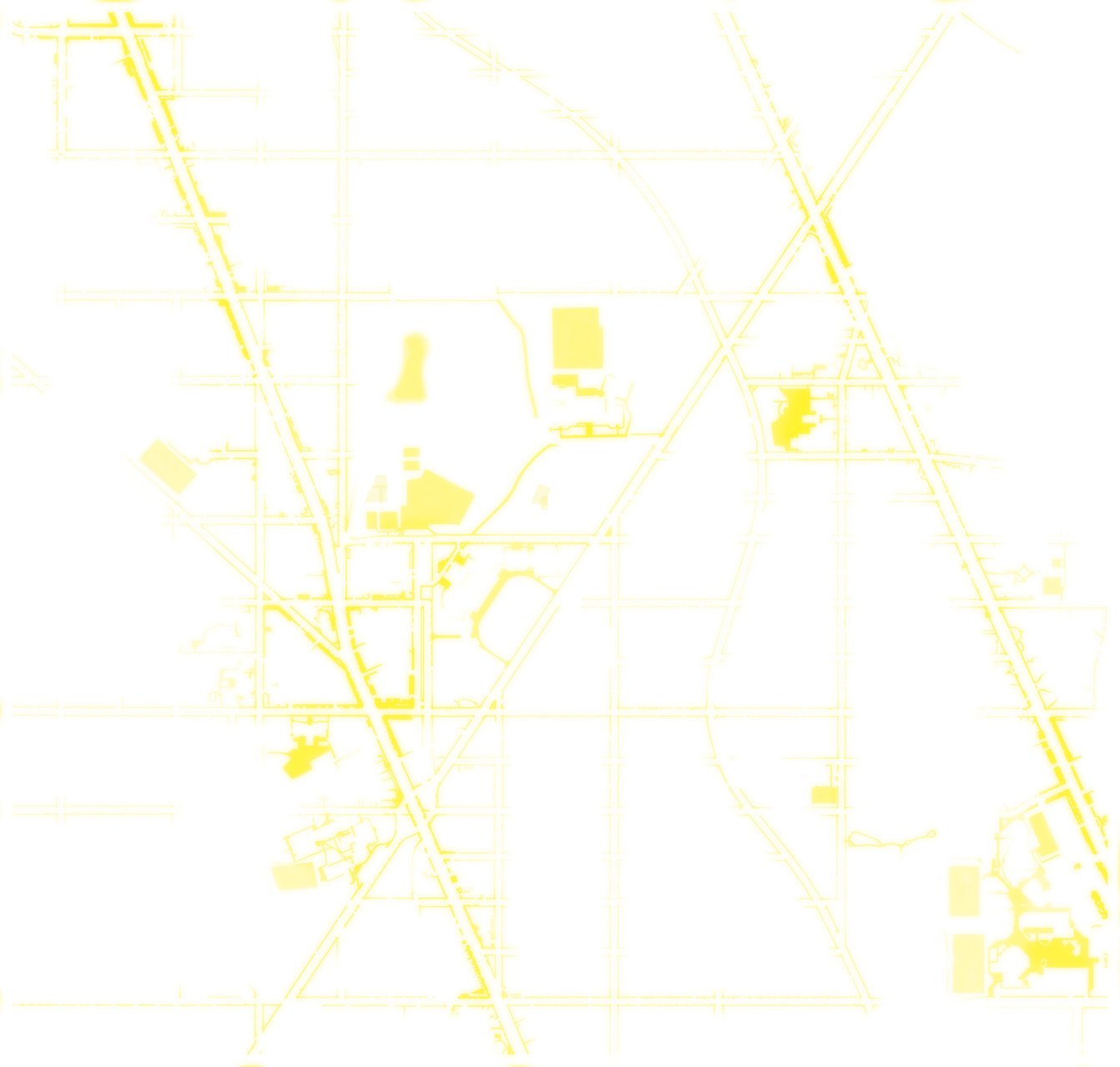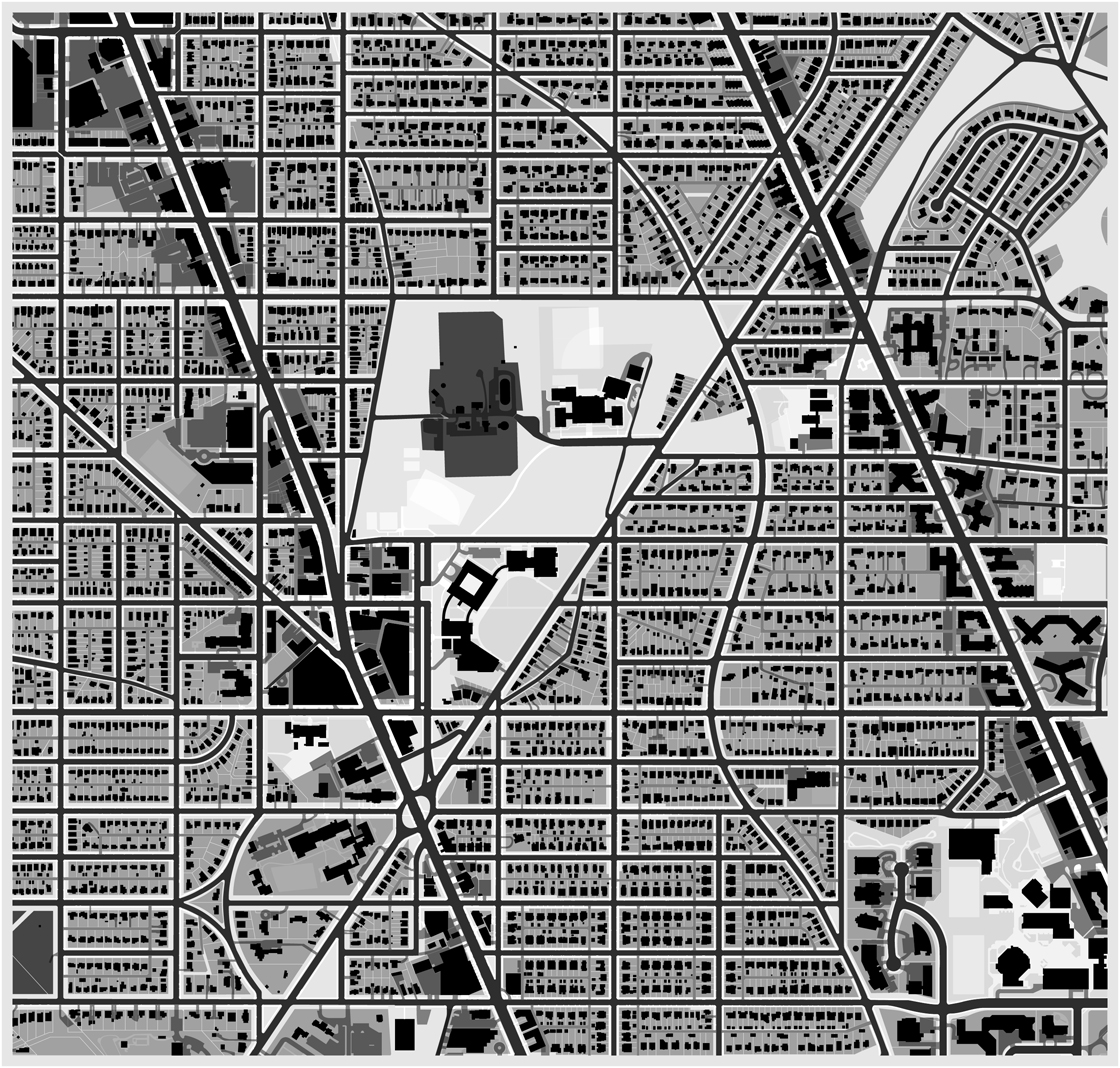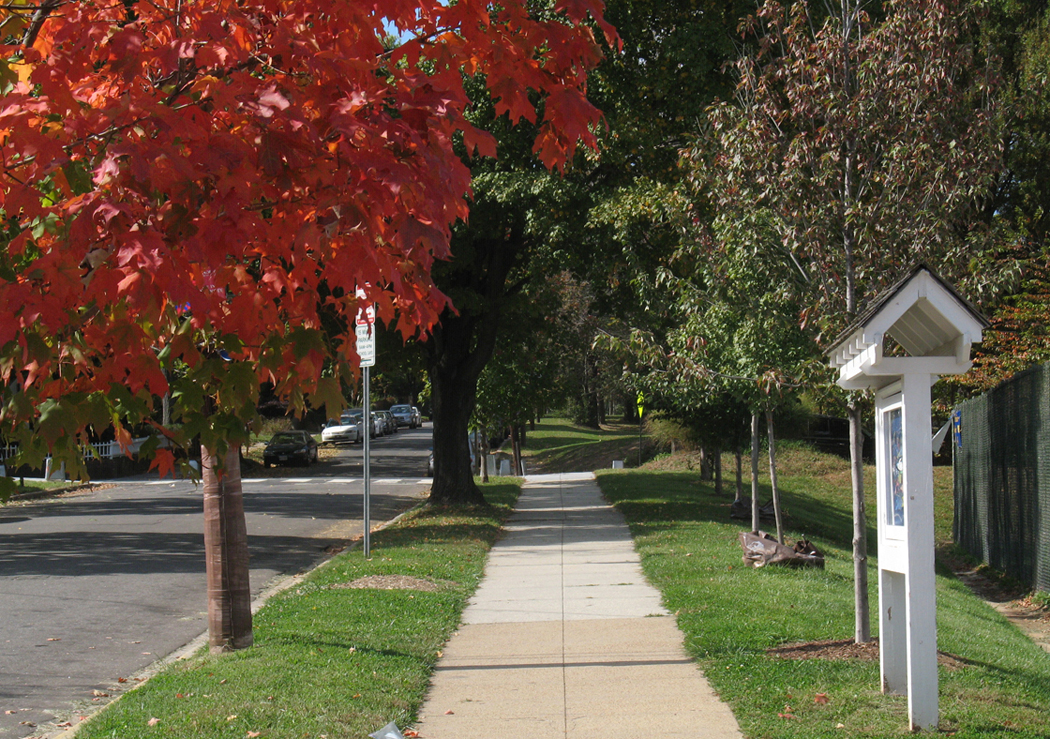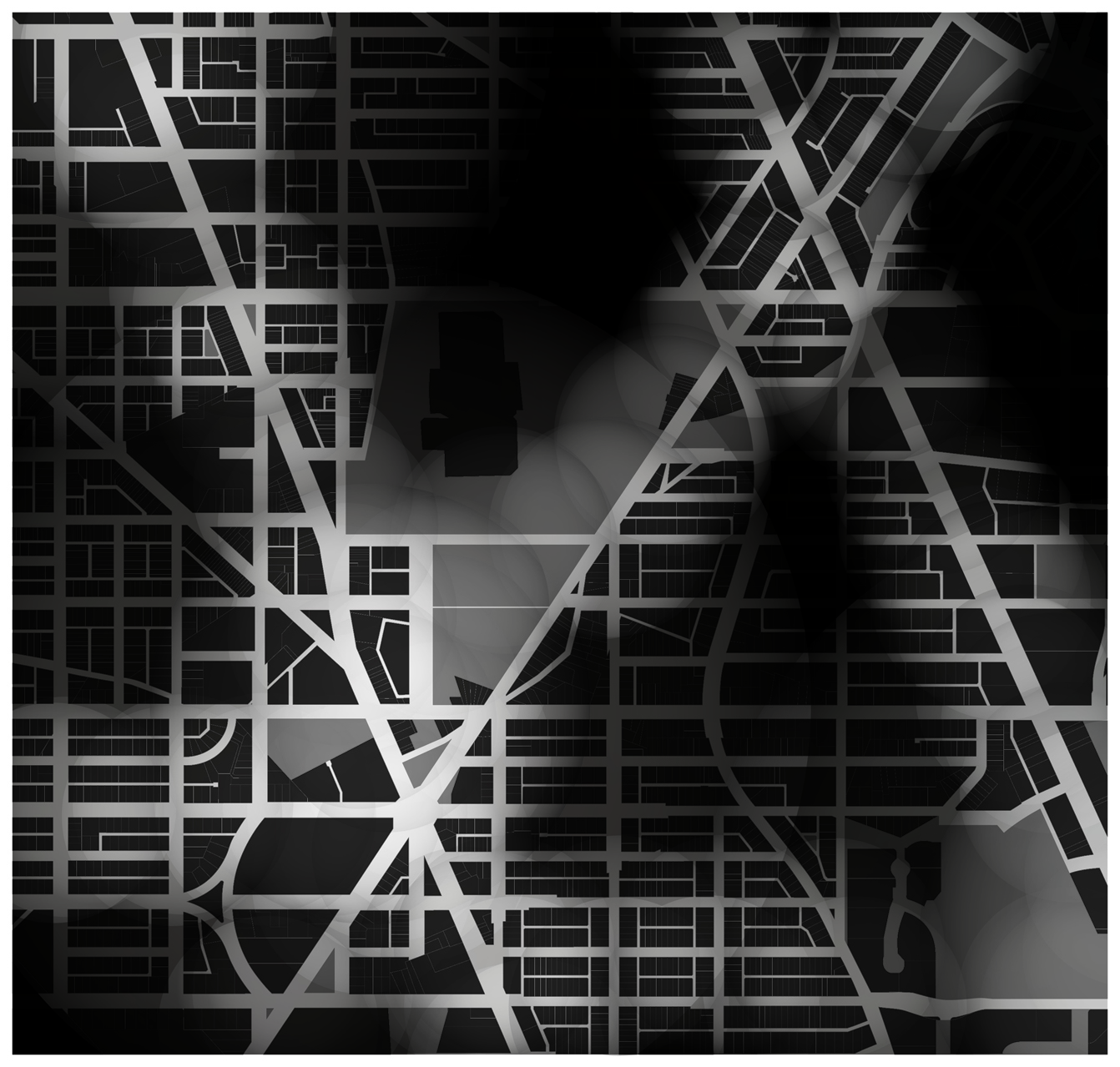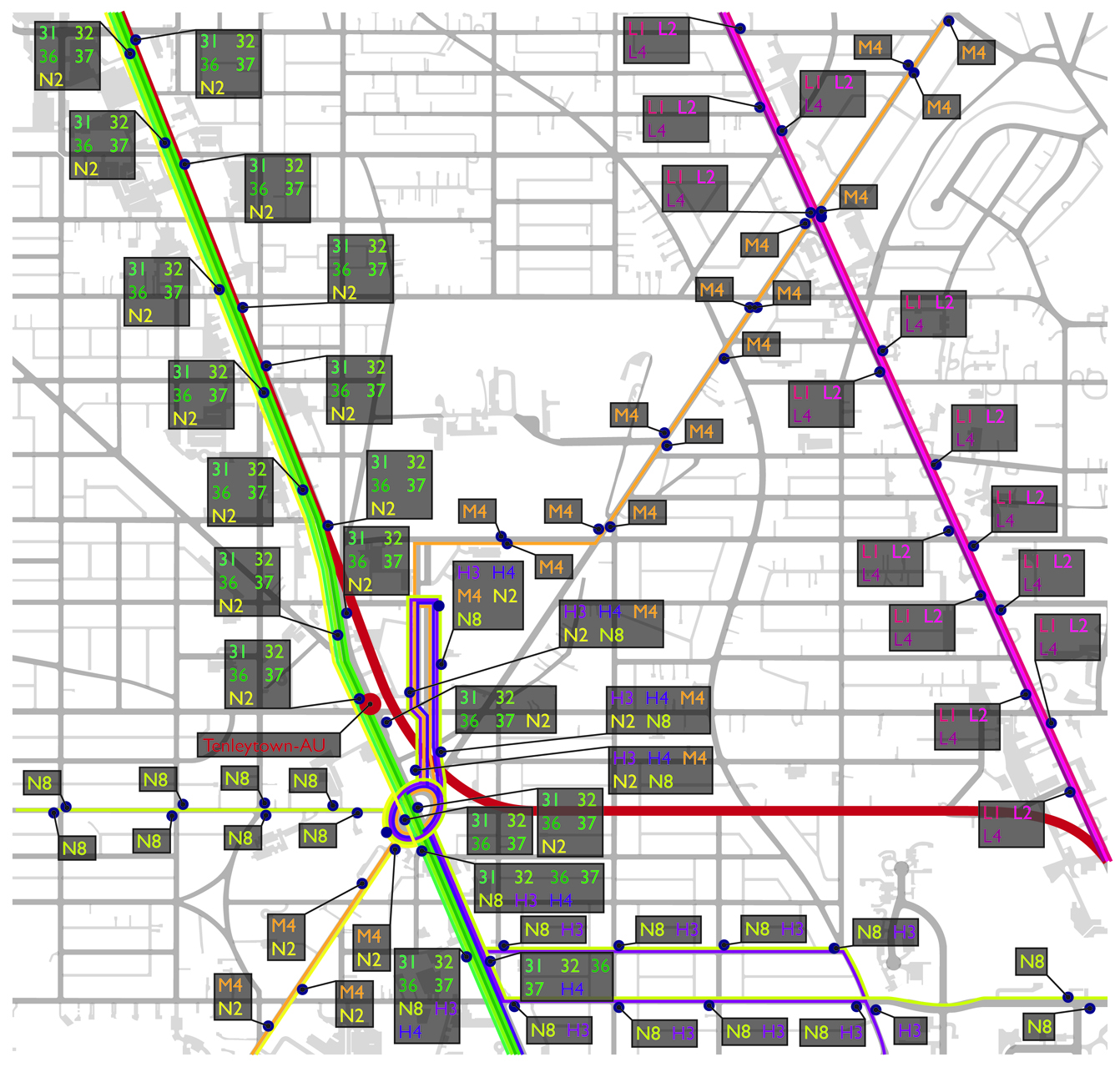
After some hard importing/copying work and on-the ground observation, I’ve finally assembled this map of all legally marked streets and alleys in DC. Next up, sidewalks, then buildings and property, and finally land use. I’ll start doing mashup comparisons of these maps for the walkshed and green space requirements. Plus, I think I came up with an particularly useful modern variation on the Nolli Plan, which should make any archi-map geek excited. Comparisons to topography under the fold.
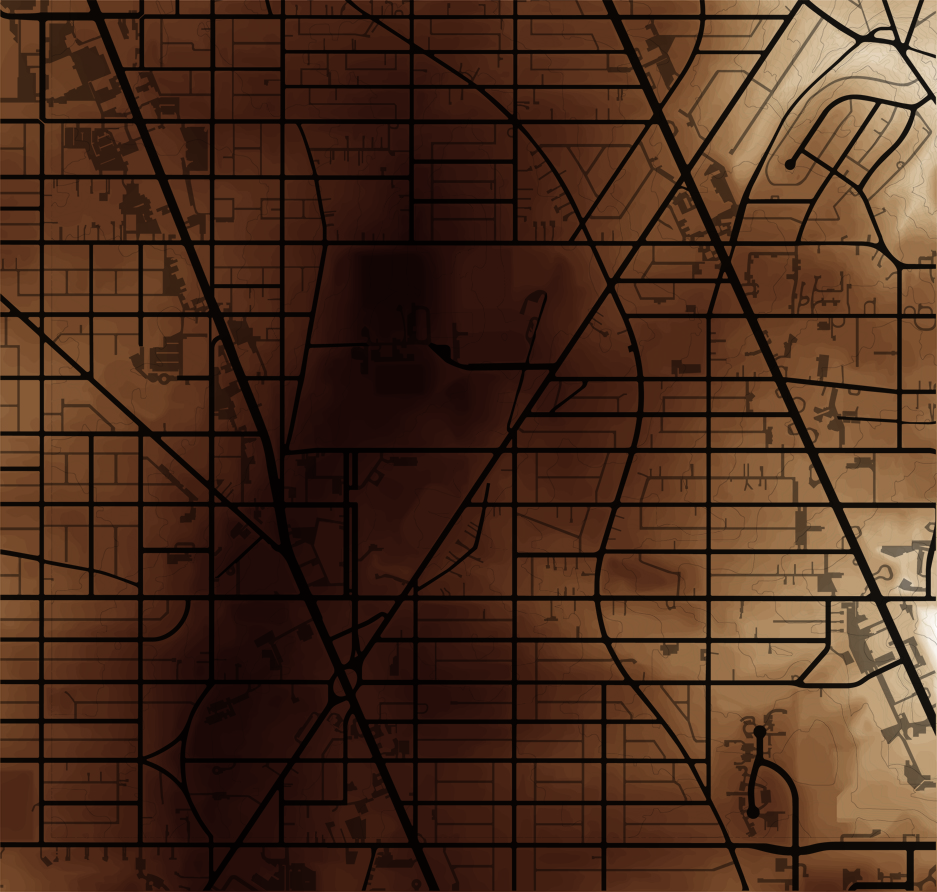
Generally, it’s interesting to see how the grid and the avenues flattened the topography. If I do a historical map, then the comparison would be fascinating, but historical topography is not relevant to my goals. Also note the amount of parking on the avenues, and how alleys nicely eliminate driveways in front of houses. Finally, Tenleytown is at the pass over the ridge line that begins at AU and ends near Chevy Chase. The hills and valleys in the area almost necessitated that the Georgetown-Frederick Pike go through this area at this spot.
